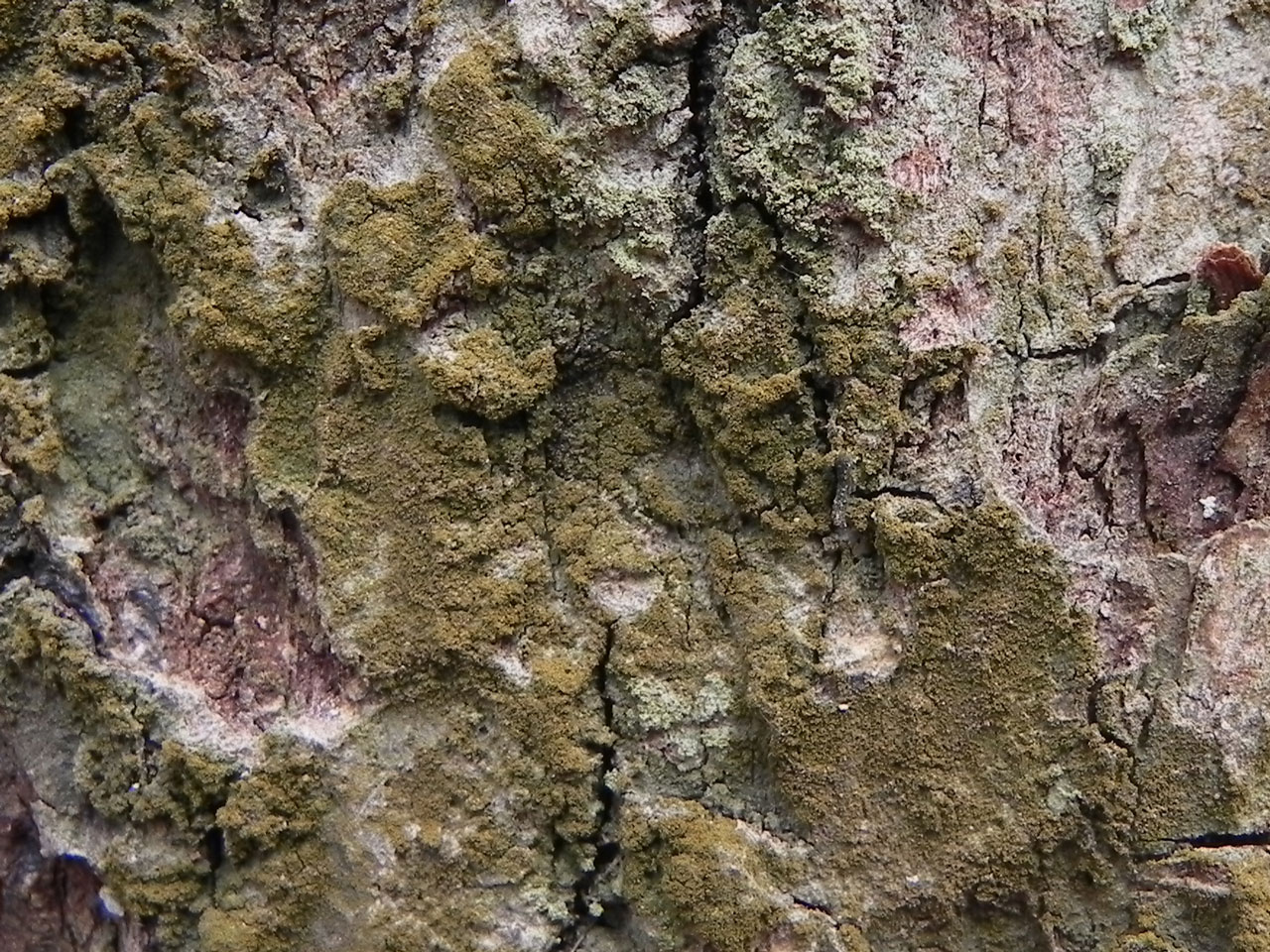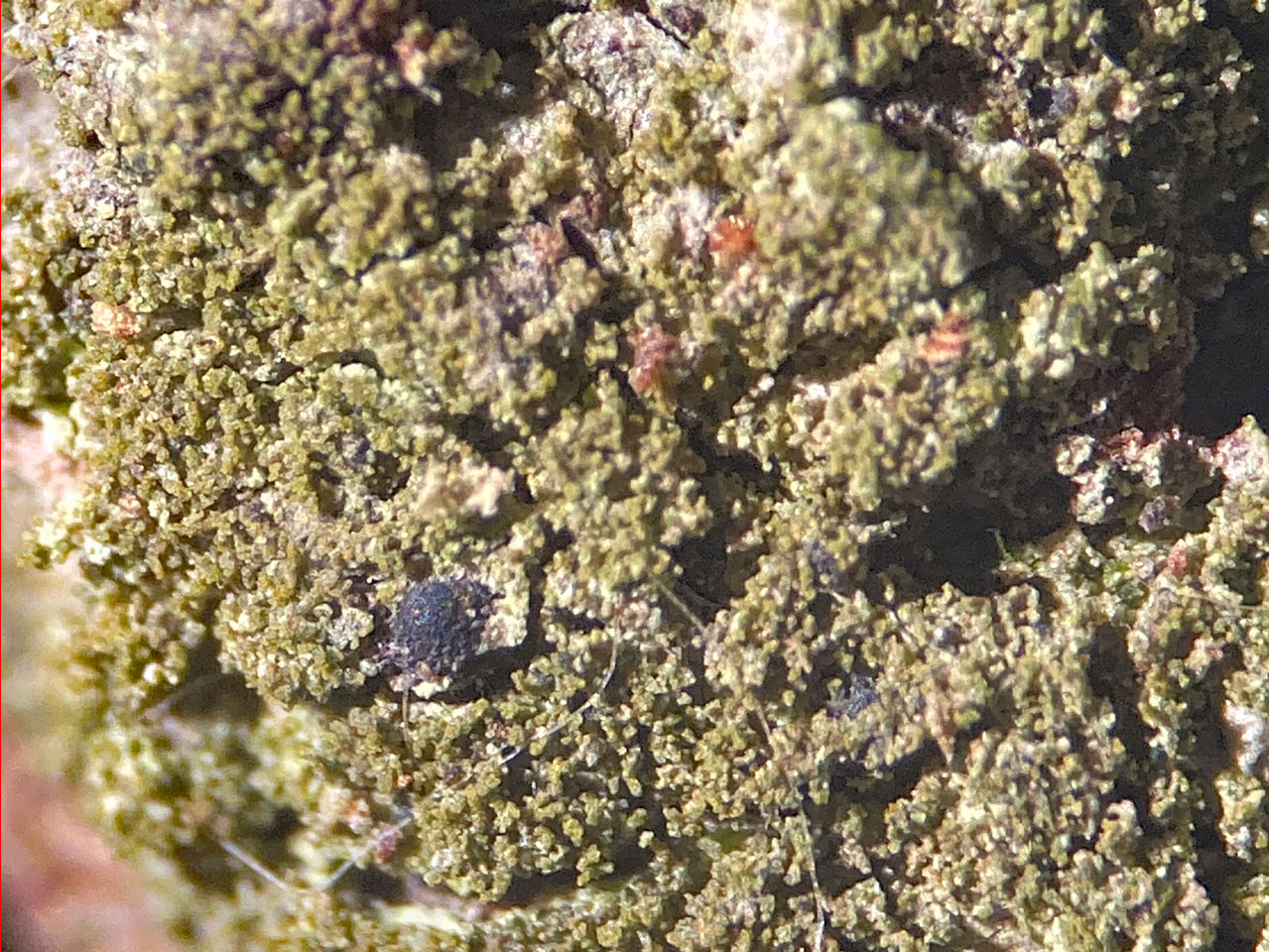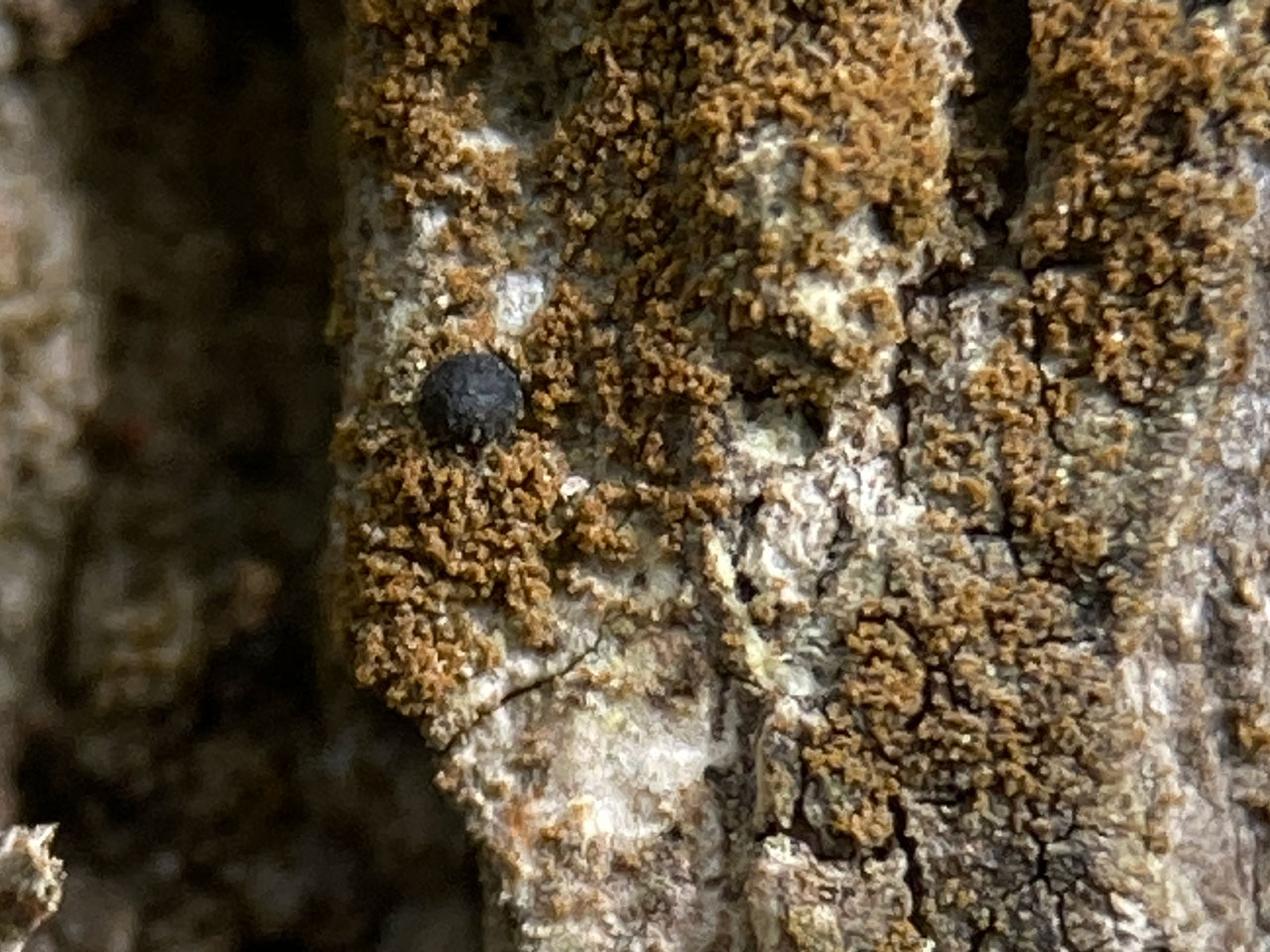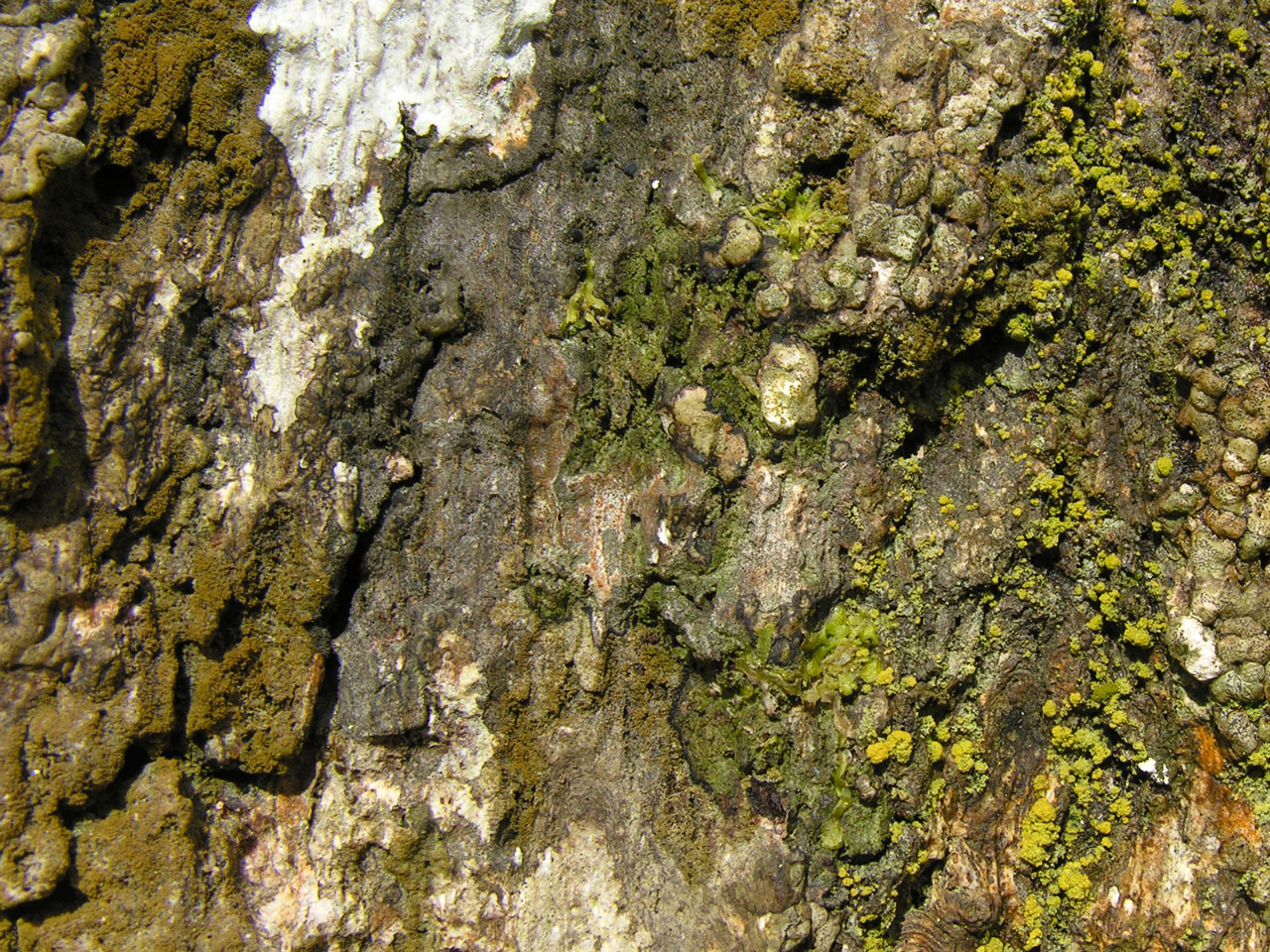One of several epiphytic southern oceanic isidiate Porina species, which are all associated with sheltered old growth woodland with varying degrees of fidelity. Porina hibernica is distinctive in its short, wide and uniformly dull orange isidia. The other isidiate Porina species are either not orange or are have brighter but non-uniform orange colour with either taller coralloid isidia or indistinct granular isidia. Porina hibernica is something of a deep forest species being typical of large sheltered and humid areas of old growth woodland, where it can become locally frequent. It has very large populations in the New Forest, Southern England and in the Killarney rainforests in south west Ireland, where it occupies 1000s of trees. Beyond these areas, however, it has rather small and thinly scattered populations, mostly on less than ten trees, often only one or two.
Thallus superficial or partly immersed, thin, grey-green to grey-ochre or pale orange; isidia present, uniformly dull orange, isodiametric when young, becoming cylindrical and branched, fragile, remaining discrete or forming nodular-coralloid mats in which the individual isidia are difficult to distinguish, never forming distinct rounded mounds; isidia to 290 μm high, branches 30–100 μm diam., with a thin and inconspicuous cortex. Perithecia occasional, black, half to three quarters immersed, to 0.7 mm diam.; involucrellum purplish brown, K+ dark grey-brown. Asci rounded at the apex, without a ring structure. Ascospores (7–) 12–16 (–17)-septate, (55–) 60–90 (–95) × 5–7 (–8) μm.
Sterile specimens are similar to Porina rosei, which differs in the isidia forming mounds when well-developed, while the individual isidia are narrower with a well-developed cortex forming a colourless layer around the photobiont. The taxon which was commonly misidentified as P. rosei (now referred to Coenogonium nimisii) also has mounded isidia but these are green to ochre, not orange and also have a well-developed cortex forming a outer colourless layer, but the isidia are less slender and overlap with smaller P. hibernica isidia in width. The very rare P. atlantica also has wide orange isidia, but these are much taller, coralloid and fragile and the the thallus has a rough surface with convex lumps. Porina collina has granular to densely coralloid isidia, the individual isidia not distinguishable, and is bright orange-brown but paler at the base, while P. hibernica is a uniform duller but more orange colour and has well defined isidia.
On moderately flushed base-rich bark of mature Quercus, rarely Fagus, in shelter and humid old growth woodland, sometimes overgrowing bryophytes. Often grows with Agonimia octospora and Coenogonium nimisii.

Rare but very locally frequent. S. England (Burnham Beeches, Buckinghamshire, New Forest, Hampshire to E. Cornwall), N. Wales (Merioneth, Cardigan), Lake District, W. Ireland. There was past confusion with Coenogonium nimisii and some records potentially refer to this taxon.
This southern oceanic species has very large populations in the New Forest, Southern England and in the Killarney rainforests in south west Ireland, but has rather small and thinly scattered populations elsewhere. It is something of a deep forest species being typical of large sheltered and humid areas of old growth woodland, where it can become locally frequent. Prefers already shaded woods and is vulnerable to being lost to deep shade from the spread of exotic (Rhododendron) or native shrubs (Holly), the latter mainly caused by removal of grazing from traditionally grazed woodlands.
Britain: Near Threatened & International Responsibility Species
England: listed as a Section 41 species
Wales: listed as a Section 7 species
Orange, A., Cannon, P., Malíček, J., Sanderson, N., Coppins, B. & Simkin, J. (2021). Ostropales: Porinaceae, including the genus Porina. Revisions of British and Irish Lichens 4: 1-12.
Text by N A Sanderson, based Orange et al (2021)







